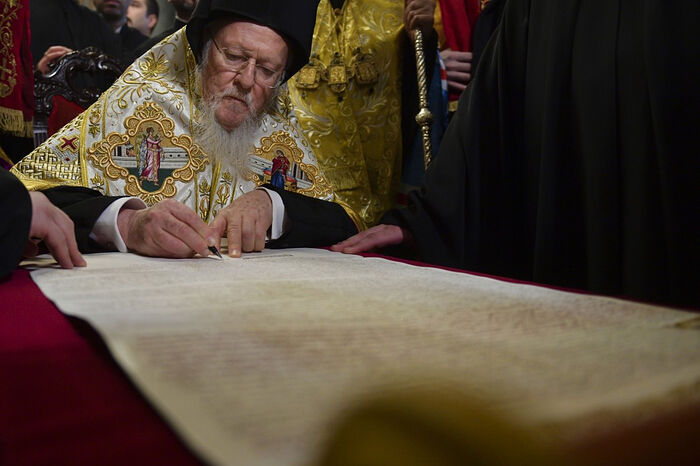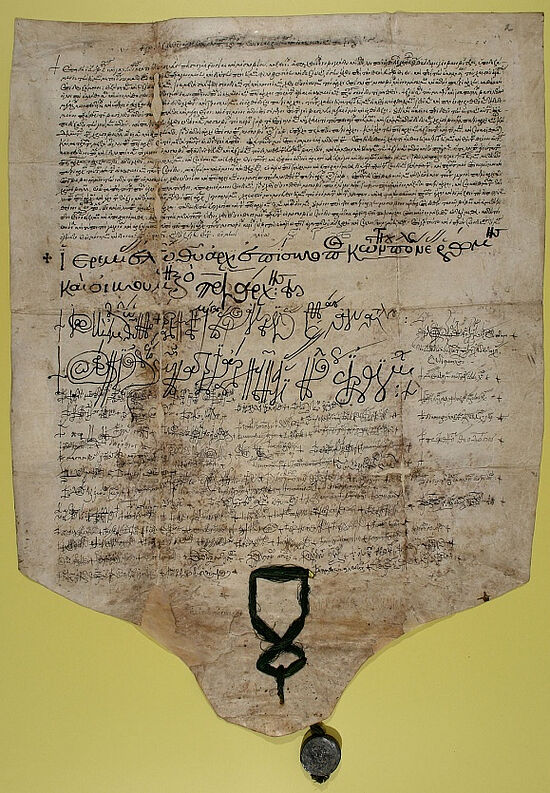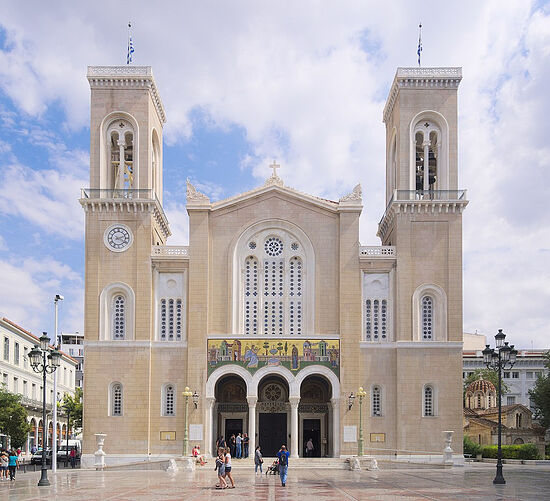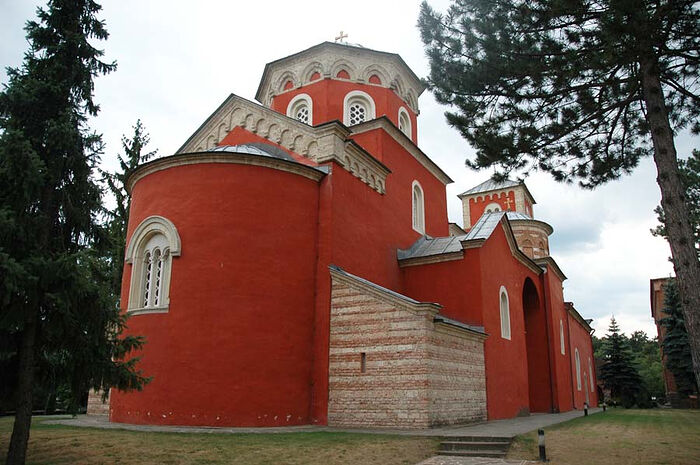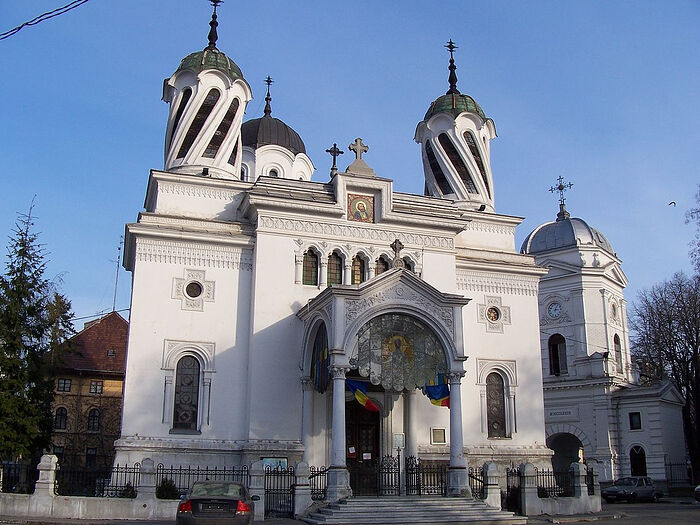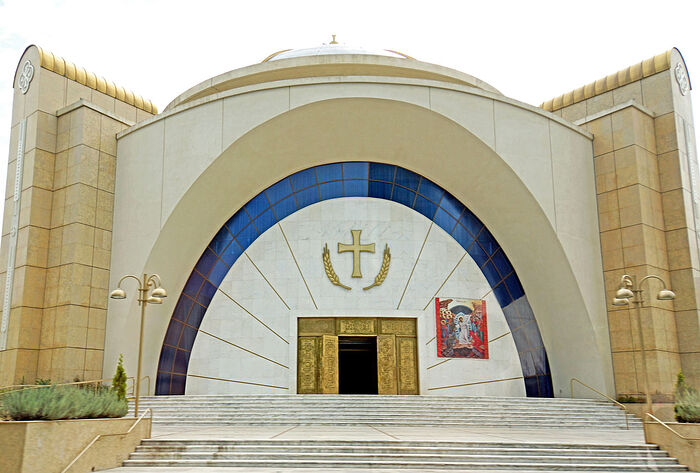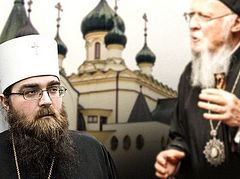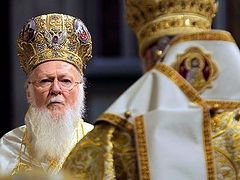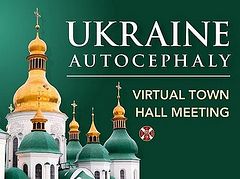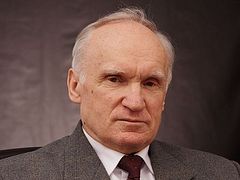Introduction
The tomoi1 granted by the Ecumenical Patriarchate of Constantinople on the autocephaly of various Orthodox Churches are not simply documents, they are monuments of history and ecclesiology. Through them, it is possible to study changes in the teaching of Constantinople concerning itself and autocephaly, on the role of Christ in the Church, and on the meanings of the canons and councils.
Typically, the Ecumenical Councils, affirming in doctrine previously unformalized dogmas [are traditionally understood to have] merely formalized the Holy Tradition of the Church on those issues which aroused controversy.
In the situations presented by the tomoi of the Constantinople Patriarchate, we see a change in the content of the teaching on the Church. We see here not only new formulas, but direct contradictions both to the previous forms, and to the canonical legacy of the Ecumenical Councils. We can trace the genesis of the formation of new doctrines on the Church, which at first filled “gaps” in canon law, then began to supplant it and ultimately came into conflict with it. This infringed on the ecclesiological dogmas approved not only by the Ecumenical Councils, but also those set forth directly in the Gospel and the Epistles of the Holy Apostles:
Christ is the head of the church [Eph. 5:23]
And hath put all things under his feet, and gave him to be the head over all things to the church (Eph. 1:22).
For as we have many members in one body, and all members have not the same office: So we, being many, are one body in Christ, and every one members one of another (Romans 12: 4–5).
Perhaps, due to obvious contradictions between the tomoi granted by Constantinople in previous years, in 2020 the documents themselves became unavailable on the website of the Patriarchate of Constantinople itself, where they were easily found a year ago. Too much attention arose on this topic after the granting of the tomos of autocephaly to the “Orthodox Church of Ukraine”.
Tomoi, in contrast to various articles and statements by the hierarchs of the EP, including those by its patriarch, cannot be considered private theological opinions or a subjective understanding of the canons. A Tomos is an official document expressing the “agreement of the fathers” of the Ecumenical Patriarchate, adopted by its Holy Synod, which in the Constantinople tradition, possesses rights similar to those of the Council of Bishops of the Russian Orthodox Church and some other Churches. A tomos is, therefore, if not an official expression, then an official reflection of the teachings of the Ecumenical Patriarchate.
As is well known, in January of 2019, the Patriarchate of Constantinople granted a tomos of autocephaly to the so-called “Orthodox Church of Ukraine” (OCU), which was called in this document “the Most Holy Church of Ukraine”. This event caused a schism in the Orthodox world, the primarily opposed parties being the Patriarchates of Constantinople and Moscow. The primary basis of the controversy and conflict was the following points:
-
The dispute over the canonical belonging of the territory of modern Ukraine;
-
the possibility of granting autocephaly to schismatics and a self-appointed assembly of “bishops” deprived of apostolic succession;
-
the right of the Cathedra of Constantinople to make decisions on the fate and autocephaly of “parachurch” entities that have broken away from other Local Churches;
-
Constantinople’s right of primacy within the Orthodox world;
-
And the content of the actual given tomos of autocephaly.
The last point caused especially fierce disputes not even between supporters of the Moscow and Constantinople Patriarchates, but between the Ukrainian schismatics themselves, who eventually accepted the Phanar’s tomos as a temporary, forced compromise, since the content of the tomos did not even suit them. In addition to depriving them of their previously self-proclaimed patriarchal status, the OCU received a number of other restrictions in rights and status. In reality, its new “autocephalous status” gave it fewer rights in self-government than the Ukrainian Orthodox Church (UOC) possesses within the Russian Orthodox Church.
However, this issue affects the interests of not only Ukrainian schismatics, not only the canonical UOC, and even not only the Moscow and Constantinople Patriarchates. This issue affects the overall organization of the Orthodox world, the relationship of all Local Churches and, moreover, the following dilemma: Who is Christ for His Church—it’s [eminent] Head or only an object of faith?
Let’s try to figure out how atypical the tomos issued by the Phanar to the “OCU” was, and what is the genesis of the “tomosology” of the Patriarchate of Constantinople, and with it, that of other Local Churches.
Of the currently existing autocephalous Orthodox Churches, the most ancient are the Jerusalem, Alexandrian and Antiochian Churches, founded by the Holy Apostles. Later, their number was supplemented by Constantinople, whose cathedra gained importance after the founding of the new capital of the Roman Empire—Constantinople—by Emperor Constantine in 330. Its status of having “…the prerogative of honor after the Bishop of Rome…” was confirmed by the third canon of the Second Ecumenical Council in 381.
The autocephaly of the Church of Cyprus was received from the Church of Antioch and approved by the Third Ecumenical (Ephesian) Council, namely its eighth canon, in 431. In the fifth century, the Georgian Church received autocephaly from Antioch; later, after a series of historical peripeteia, autocephaly was confirmed at the Local Council of Antioch in 1057.
All the Local Orthodox Churches that arose after that received autocephaly from the Constantinople or Russian Church (which in the latter case became a stumbling block between these Churches).
The Russian Church
For a basic comparison, we will take the tomos2 of the autocephaly of the Russian Church from 1590 as the only document of its kind concerning the current Local Church. Let's pay attention to the key positions of this document (we will not cite the full text of the documents, since this will require a great increase in the volume of this publication; we will cite only quotes and excerpts that are relevant for comparison, the full text will be available below at indicated links):
“Confirmed in May of 1590 by Jeremiah, by grace of God, Archbishop of Constantinople-New Rome and Ecumenical Patriarch … we install the Archbishop3 of Moscow and name him Patriarch, as others are thus titled; primely, the Ecumenical Patriarch of Constantinople from the holy First Ecumenical Council is honored with the dignity of the blessed and Equal-to-the-Apostles Emperor Constantine the Great, and then subsequently, the Orthodox Patriarchs of Alexandria, Antioch and Jerusalem, with the grace of our humility, our eyes having beheld and rejoiced at this empire given from God, that it be so vast and majestic, as there is now one great Orthodox Tzar on the earth, and it would be unworthy not to hear his will.
…as concerns this grámmata, that he, the Archbishop of Moscow, shall rule as the fifth patriarch, and [established] shall be [his] patriarchal dignity and honor to be named and honored amongst the other Patriarchs unto ages and forever, as having here been created in [his] place…
…having clearly heard the petition of the right-believing Tsar, [together with] the most worthy and indeed praiseworthy other Patriarchs of Alexandria, Antioch, and Jerusalem, and it proved itself to them to be graceful and blessed. And moreover, our humility together with these patriarchs and with the ecumenical council in one mind and thought in unity and in the will of the Holy Spirit, we write and declare this council letter. First we confess and perform in the imperial city of Moscow the ordination and patriarchal naming of the appointed lord Job, for this we perform, and for this we send, as we write, a patriarchal letter, writing about everything clearly, it has well-pleased the council that lord Job of Moscow the Patriarch be thus titled—patriarch and honored with other patriarchs, and his order shall thus be established upon him, that in prayers after the Patriarch of Jerusalem he must commemorate our name and others, and at the head and beginning to keep and honor the apostolic throne of Constantinople, and other Patriarchs…”
Full text (in Russian): https://zen.yandex.ru/media/id/5f7848c5368d1f1e76d54697/ulojennaia-gramota-ob-uchrejdenii-moskovskogo-patriarshestva-5f7872cf71c44f0829fe4e94
And thus, we see this document possesses certain specific features:
-
The Primate of the new autocephalous Church, the Archbishop of Moscow (in the terminology of the document) is immediately declared patriarch. We do not see any attempt to belittle his title, as was observed in a number of other cases of granting autocephaly.
-
The decision carries with it a conciliar character, approved not only by the Patriarch of Constantinople, but also by all the ancient patriarchs.
-
By status, the Patriarch of Moscow is equal to the rest of the patriarchs, and is not belittled before them.
-
The new autocephalous church is not dependent on Constantinople either in matters of producing myrrh, or in its own ecclesiastical court, or in its internal structure.
The Church of Greece
260 years later—in 1850—Constantinople would grant autocephaly to the Church of Greece, which was self-proclaimed by the political authorities of Greece in 1833. The Tomos of the Church of Greece declares:
“The Holy and Sacred Synod of Constantinople, in the year of Our Lord 1850, the month of June, the eight day. In the name of the Father, and the Son, and the Holy Spirit. Amen.
…we have decreed by the power of the All-Holy and All-fulfilling Spirit by this conciliar act, that the Orthodox Church in the Kingdom of Greece, having as its Leader and Head our Lord, God, and Savior Jesus Christ, like the entire Catholic Orthodox Church, should henceforth be legally independent; and to recognize its supreme church government as a permanent synod, consisting of bishops successively called according to the seniority of ordination, under the presidency of the most eminent Metropolitan of Athens, managing the affairs of the church according to divine and sacred canons, free and unhindered from any worldly interference. Thus, the Holy Synod in Greece, established by this conciliar act, is recognized and proclaimed to be our brother in spirit,4 proclaiming to all pious and Orthodox children of the One, Holy, Catholic, and Apostolic Church everywhere, may they recognize it as such and commemorate it under the name of the Holy Synod of the Church of Greece. We grant him all the prerogatives and powers of authority befitting the highest church government.
…[the Church of Greece will] also receive, as needed, the holy myrrh from the holy Great Church5 of Christ.
…In addition to this, in ecclesiastical situations which require joint examination and mutual coordination for the better ordering and affirmation of the Orthodox Church, it is necessary that the Holy Synod of the Church of Greece accede (defer) to the Ecumenical Patriarch and his Holy Synod. The Ecumenical Patriarch, together with his Holy Synod, will willingly provide cooperation, informing the Holy Synod of the Church of Greece as needed.
…On these grounds, this ancient well-pleased mother, like a vine blooming in the courtyards of the house of the Lord, the Great Church of Christ of Constantinople, conciliarly in the Holy Spirit recognizes and proclaims the Church of Greece as independent, and its synod as her brother in Spirit and the same to every other Local Orthodox Church.”
Full text (in Russian): https://zen.yandex.ru/media/id/5f7848c5368d1f1e76d54697/tomos-ob-avtokefalii-elladskoi-cerkvi-5f787b0661e6d41ef5fa98f7.
In this tomos, we already see significant differences in the conditions of autocephaly from those that could be observed in the case of the Russian Church.
-
We do not see such conciliarity under this tomos, as under the grámmata of autocephaly of the Russian Church. Nevertheless, certain signs of conciliarity are still present. In addition to the signature of the Patriarch, and members of the Holy Synod of the Church of Constantinople, the tomos is signed by Cyril, the Patriarch of Jerusalem. That is, it was an act of at least two Local Churches.
-
The primate of the Church of Greece does not receive the status of patriarch.
-
The tomos regulates the composition of the Synod of the Church of Greece.
-
The tomos prescribes the Church of Greece receive its myrrh from the Church of Constantinople.
-
Interaction with other Local Churches in resolving issues of general importance in the tomos is prescribed to be carried out through the Church of Constantinople.
Thus, we are already observing in the example of the Church of Greece a kind of “limited autocephaly”, in which Athens finds itself in a deliberately dependent position on Constantinople concerning the reception or production of myrrh (without which, as we understand, the mystical life of the Church is impossible), in matters of external relations, and in matters of the independent determination of the composition of internal management bodies.
At the same time, it is important to note that, despite these restrictions in the text of the document, the Church of Greece is recognized as equal to the Church of Constantinople, and its synod is recognized as a “brother in Spirit” of the Church of Constantinople and of “every other Local Orthodox Church”. It is also very important to note that the Lord Jesus Christ is called the Head of the entire Catholic Church. This feature of the document, which is self-evident for Orthodox Christians, will no longer be so clearly defined in the twenty-first century.
The Serbian Orthodox Church
In 1879, 29 years later, Constantinople granted autocephaly to the Serbian Church, thereby reviving the Patriarchate of Peć, which is succeeded by the Serbian Church. This is done at the request of the authorities of the liberated Serbia.
Patriarch Joachim III of Constantinople issued a tomos on the autocephaly of the Serbian Orthodox Church.
“…Over time, the division of the Church into local ones was established, independent of one another [emphasis mine—P.D.], with internal self-government and under the authority of their pastors, teachers and ministers of the Gospel of Christ, that is, bishops or archbishops and patriarchs. And this division was established not only in view of the historical importance of certain cities and borders in Christianity, but also of the political state of the nation…in view of the fact that pious and God-protected Serbia gained political independence, and that its pious, God-approved, gracious prince and ruler Milan Obrenović IV, and the most eminent Archbishop of Belgrade and Metropolitan of Serbia, lord Michael, on behalf of the righteous clergy and pious people, turned to us with letters and, in accordance with political independence, wished also ecclesiastical independence, our humility, together with our Holy Synod of Most Reverend Metropolitans, our beloved in the Holy Spirit brothers and co-servants gathered…And, by the will of the Holy Spirit, found that their request was appropriate and agreed with the holy canon and church precedent. Therefore, we establish the Orthodox Church of the Serbian principality, which hitherto, in the person of the Archbishop of Belgrade and Metropolitan of Serbia, stood in canonical dependence on our holy, apostolic and patriarchal throne of Constantinople, together with the dioceses annexed to it, or, more precisely, the entire Orthodox Church, which is located within the political and geographical limits of the liberated principality of Serbia, from now on shall be canonically self-governed,6 independent, and self-ruled, whose head, like all Orthodox Churches, is the Theánthropos,7 our Lord and Savior, Jesus Christ [emphasis mine—P.D.], and which in church affairs possesses and recognizes as its primate the Archbishop of Belgrade and Metropolitan of Serbia; and this, together with a Council, compiled, according to the canons, of bishops from the regions of Serbia, manages the church affairs of the principality freely, independently of anyone, as the divine and sacred rules command. Therefore, further by the same synodic act, we recognize the Serbian Church and declare her as our spiritual sister [emphasis mine—P.D.], and we entrust all Orthodox Churches to recognize her as such, and commemorate her as the “Holy, independent8 Church of the Serbian principality”. Likewise, we give her all the power and rights that belong to independent church leadership… Recieves Holy Chrism from the great Constantinople Mother-Church of Christ... As for the internal church government, [the primate of this church] sits, decides and determines with his Synod, following the teachings of the Gospel, holy tradition and the definitions of the Holy Church” [emphasis mine—P.D.].
Full text (in Russian): https://www.sedmitza.ru/lib/text/441204/ (used here are the Russian translation and the original Greek text, inasmuch as there are certain differences between them on the matter of recieving Holy Chrism: http://markmarkou.sites.sch.gr/1871_1900/1879/tomos1879.htm).
We will attempt to analyze the text of this tomos:
-
As in the case of the Church of Greece, the primate of the new autocephalous church does not receive the status of patriarch, despite the fact that historically this status was held by the primate of the Church of Peć, whose successor was the Serbian Church. This status will appear for the SOC only in 1920, after numerous historical events which influenced this issue.
-
Unlike the tomos of the Church of Greece, the document does not regulate the procedure for forming the Holy Synod. Instead, there is an abstract reference to the gospel teaching and tradition of the Church. That is, in fact, this issue has been left to the Serbian Church itself.
-
Just as in the Greek Church, the Serbian Church must receive Chrism from Constantinople.
-
Also, the issue of relations with other Local Churches is not mentioned and, accordingly, there is no mention of Constantinople's monopoly on its moderation.
-
The text contains an important mention of the independence of the Local Churches from each other.
-
It is written in the text, as well as in the tomos of the Church of Greece, that the Head of the Church, like all Orthodox Churches, is the God-man, our Lord and Savior Jesus Christ.
-
The Serbian Church is named the Sister Church of the Church of Constantinople.
The Romanian Church
Six years later, in 1885, the See of Constantinople recognized the autocephaly of the Romanian Church, which had previously been self-proclaimed in 1865.
“…the Romanian Orthodox Church should remain, be considered and be recognized by everyone as independent and autocephalous, governed by its own Holy Synod, presided over by the Most Eminent and Most Worthy Metropolitan of Hungro-Wallachia and Exarch of all Romania, not recognizing in their own internal government any other ecclesiastical authority, except for the very Head of the One, Holy, Catholic, and Apostolic Church, the God-man and Redeemer, Who alone is the chief, cornerstone and eternal High Priest and Archpastor. So, recognizing through this sacred patriarchal and synodal act, thus affirmed on the cornerstone of faith and pure teaching, which the fathers passed on to us intact, the firmly preserved Orthodox Church of the Romanian kingdom as autocephalous and independently governed in everything, we proclaim its holy synod our beloved brother in Christ which enjoys all the prerogatives and rights of an autocephalous church, so that he would carry out every act of ecclesiastical good-structuring and order, in accordance with the constant and continuous tradition of the Catholic Orthodox Church, so that he and others will recognize him as such in the oikumene of Orthodox Churches and that it be called by the name of the Holy Synod of the Romanian Church…
…to communicate directly with the Ecumenical [Patriarch] and with other Holy Patriarchs, and with all the Orthodox holy Churches of God in all important canonical and dogmatic issues in need of general discussion, according to the sacred custom kept by the fathers from ancient times.
Equally, it also has the right to ask for and receive from our Great Church of Christ everything that other Autocephalous Churches have the right to ask for and receive from her.
So, on the basis of all this, our holy and Great Church of Christ blesses from the depths of the soul [our] autocephalous and beloved sister in Christ—the Romanian Church…”
Full text (in Russian): https://www.sedmitza.ru/lib/text/441207/
When analyzing this tomos, we see positions similar in the majority of its positions (other than the matter of Chrism) to the previous document received by the Serbian Church:
-
The Romanian Church also did not receive patriarchal status along with autocephaly. The Romanian Church received the status of patriarchate in 1925.
-
Unlike the tomos of the Church of Greece, the document does not regulate the procedure for forming the Holy Synod.
-
The issue of obtaining myrrh is not mentioned in the document. Instead, the abstract formula “ask and receive,” as with other autocephalous Churches, is used.
-
The issue of relations with other Local Churches is spelled out as the right of the Romanian Church without indicating any monopoly of Constantinople on its moderation. If in the case of the tomos of the Church of Greece, the monopoly of Constantinople is fixed, and in the case of the Serbian Church a monopoly is not indicated, then in the case of the Romanian Church, the wording excludes such a monopoly.
-
It is written in the text, as well as in the previous tomos, that the Head of the Church is the Lord Jesus Christ.
-
The Romanian Church is named the Sister Church of the Church of Constantinople.
The Polish Church
The first tomos of autocephaly in the twentieth century was issued by Constantinople in special circumstances. For the first time, Constantinople granted autocephaly to bishops who were neither on its canonical territory nor part of its body of clergy. In 1923, the See of Constantinople proclaimed the autocephaly of the Polish Orthodox Church, which had previously been autonomous within the Russian Orthodox Church (later the leaders of the Polish Church would repent and autocephaly would be granted to them by Moscow in 1948).
Due to this specificity of the tomos, a significant part of it is made up of very vague explanations that the Polish territory belongs historically to the lands of the Kievan Metropolia, whose annexation “to the Holy Church of Moscow did not occur according to the prescriptions of canonical rules.” The rest of Constantinople’s tomos to the Polish Church reads:
“…our humility and the most holy metropolitans, our beloved brothers and co-ministers in the Holy Spirit, considered it their duty to heed the request which the Holy Orthodox Church in Poland addressed to us, and to give our blessing and approval for its autocephalous and independent structure. As a result, determining in a conciliar manner, by the will of the Holy Spirit, we declared that: we recognize the autocephalous structure of the Orthodox Church in Poland and give our blessing so that from now on, she will be governed as a spiritual sister and decide her affairs independently and autocephalously, in accordance with the rank and unlimited rights of other holy autocephalous Orthodox Churches, recognizing as its supreme ecclesiastical authority a Holy Synod consisting of the Orthodox canonical bishops in Poland, having His Eminence, the Metropolitan of Warsaw and All Poland its president…
In addition, we decree that the autocephalous Orthodox sister Church in Poland must receive holy myrrh from our Great Church of Christ [i.e. from Constantinople—Tans.] At the same time, we recommend that in matters of ecclesiastical order and more general matters that exceed the boundaries of the jurisdiction of each Autocephalous Church taken separately, His Eminence the Metropolitan of Warsaw and All Poland should turn to our Most Holy Ecumenical Patriarchal See, through which communion with every Orthodox Church is maintained “rightly dividing the word of truth”, also asking the authoritative opinion and cooperation of the Sister Churches…
May the Lord God strengthen forever, by the mercy and merit of the First Great and Supreme Shepherd of Christ, our God, the Autocephalous Sister Church of Poland, so joyfully established, moving and strengthening everything in her for the glory of His Holy Name, for the benefit of her pious flock and for the joy of all the Autocephalous Orthodox Sister Churches.”
Full text (in Russian): https://zen.yandex.ru/media/id/5f7848c5368d1f1e76d54697/tomos-ob-avtokefalii-polskoi-cerkvi-5f787e2e71c44f08290fbf92
The twentieth century brought the collapse of the Ottoman Empire. Together with its collapse, the influence of the Patriarchate of Constantinople [in the former territories of] the empire collapsed. The territories of other Local Churches, formerly part of the Ottoman Empire, remained outside the new state of Turkey. This means that the power of the Patriarch of Constantinople, who was previously the ethnarch of all Orthodox Christians in the Ottoman hierarchy, was lost. A significant part of the Greek parishioners living in the territory of the Turkish Republic were massacred by the Turks, or forced to migrate to Greece. The ecumenical throne was losing its territory, power, influence and authority. And it was during this period that the practice of issuing tomoi, in which the powers of the Local Churches were reduced in favor of Constantinople, arose. As we have seen earlier, in the nineteenth century, this practice of significant restrictions on independence was applied only in the case of the Greek Church. The tomoi which followed [up until this moment] were not of a similar nature.
And now, using the example of the Polish Church, we observe the tendency of increasing the number of restrictions.
-
The Polish Church does not receive the status of a Patriarchate.
-
The document does not regulate the procedure for forming the Holy Synod, which favorably distinguishes this tomos from the tomos of the Greek Church.
-
The tomos spells out the monopoly of Constantinople to grant myrrh to the Polish Church, as was observed in the tomos of the Greek Church.
-
The tomos spells out the Phanar's monopoly on the moderation of relations between the Polish Church and other Local Churches.
But at the same time:
-
The Lord Jesus Christ is recognized as the head of the Church.
-
The Polish Church is named the Sister Church of the Church of Constantinople.
The Albanian Church
The revived practice of “limited” tomoi, after the Polish Church, is consolidated in the tomos of autocephaly issued to the Albanian Church in 1937 (self-proclaimed in 1922-1929):
“The Holy Church of Christ, as a caring Mother … generously responds to the requests of the Churches for granting them independence, so as not to lead into temptation, to bring as much benefit as possible in the Lord.
And now, when the pious Orthodox Christians of the young Albanian state blessed by God, turned to our Most Holy Apostolic and Patriarchal Ecumenical See, under the shadow of which everyone had found a safe hiding place for centuries and, by the grace of Christ, remained saved in this vineyard, they turned as to a caring Mother, with a warm a request for blessings and a proclamation of the independence and autocephaly of the church diocese as the only organization in the new political conditions…
…our humility … gives them our blessing for an independent autocephalous organization of church government.
So, conciliarly and in the Holy Spirit, we define and proclaim that from now on all Orthodox dioceses and communities existing in the God-saved Albanian state will unite into one independent autocephalous church organization, which will be called the Orthodox Autocephalous Albanian Church.
This Church, which is our spiritual sister, henceforth exercises its governance independently and autocephalously, in accordance with the order and sovereign rights inherent in all Holy Orthodox Autocephalous Churches, headed by its head is the Most Reverend Archbishop of Tirana and All Albania.
…We emphasize at the same time that the fraternal Holy Autocephalous Orthodox Church of Albania must receive the holy myrrh from our Great Church of Christ [i.e. Constantinople].
We also recommend that for all questions and misunderstandings of a general ecclesiastical nature concerning the conditions and jurisdiction of the Autocephalous Churches, the Archbishop of Tirana and All Albania should turn to our Holiness the Patriarchal Ecumenical See, through which all Orthodox episcopates communicate with each other, rightly dividing the word of truth, and also asking the opinion of other brotherly Churches.
…May the mercy of the first Great High Priest and Pastor Christ our God abide with the newly established fraternal Orthodox Autocephalous Albanian Church, may the Lord God strengthen it and keep it in prosperity.”
Full text (in Russian): https://religion.wikireading.ru/193117
This tomos is similar in all substantive positions to the tomos issued to the Polish Church. Its only difference is the change in symbols: apart from the term "Sister Church", the text contains twice an emphasis on the role of the Patriarchate of Constantinople as the “Mother Church.”
This page was updated on November 2, 2020 to correct an omission in the section on the Serbian Church concerning its receiving Holy Chrism from Constantinople.—OC
(To be continued)

